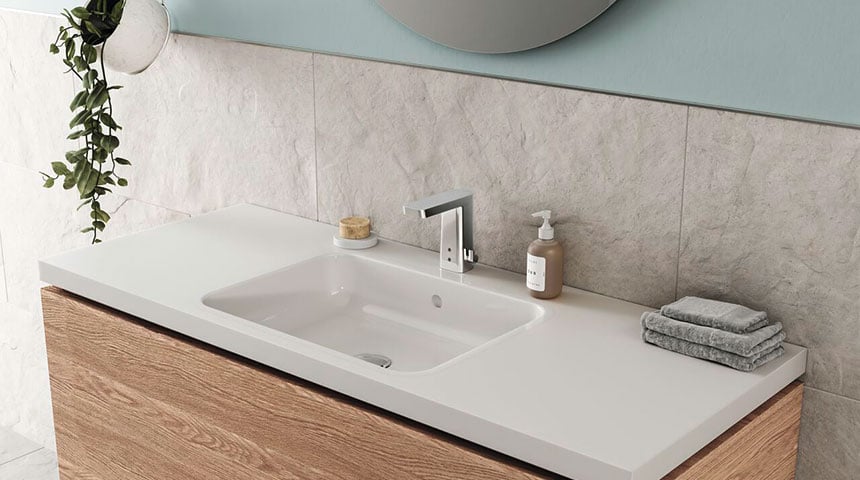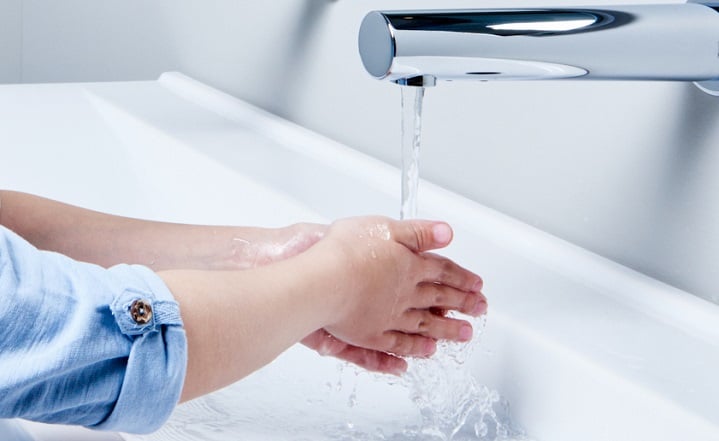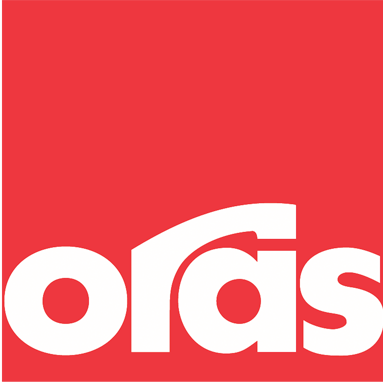The increasing megatrends around sustainability and health and safety, accelerated by the COVID-19, are setting higher standards for solutions that improve our living environments. They are setting higher standards also for the way we use and interact with water, and the type of faucets and sanitary fittings we choose to use.
According to a consumer survey*, a clear majority of almost 85% of people are expecting to have a touchless faucet in the public premises they visit. This sets high demands for decision-makers to ensure people have safe and hygienic access to water in all spaces. According to the same consumer survey, almost half of the respondents would be interested in having a touchless faucet at their homes.
This is a clear direction Oras can see in their daily business as well: automatic and touchless faucets are becoming a prerequisite in public places, and now more and more people are also having them installed in their homes. The sales of touchless faucets and other SMART products have increased remarkably during the past times.

Touchless faucets are becoming popular in both private homes and in public spaces.
“There are clear reasons for this direction: people are more conscious and aware of the possibilities and solutions that can make their living and working environments safer, healthier and more sustainable. Touchless faucets are a great example of one single device that can improve hygiene remarkably, simultaneously saving water and energy,” says Kasper Thomsen, Product Category Manager for Public and Health & Care at Oras Group and continues: “Installing touchless faucets for example to a school or a kindergarten is probably one of the best and the simplest and concrete ways to reduce diseases from spreading.”
Indeed, to reduce the spread of germs, many facilities throughout Europe have switched to smart faucets. By eliminating the need to touch the faucet, smart faucets can prevent bacteria from spreading. Touchless faucets are also an effective solution against the spread of legionella: Using automatic control settings, faucets can be set to flush at regular intervals. This limits water from stagnating in the pipes and legionella bacteria from growing in them. In addition to hygiene, many public and semi-public places like shopping centers and offices, are looking for controllability and durability of their premises. Via the integrated Bluetooth® connection, the maintenance of the touchless faucets is extremely easy.
"Touchless faucets are a great example of one single device that can improve hygiene remarkably, simultaneously saving water and energy."
Oras Group has been producing touchless faucets for over 35 years and is the market leader in electronic solutions. It uses its own unique and patented PSD technology, meaning the sensor is equipped with two sensors – a transmitter and a receiver, which gives a much more accurate function of the faucet – allowing the faucet to open and close the water flow when needed. “This technology ensures a much better reliability and handling of reflections from the surrounding environment and surfaces, than a standard IR sensor,” says Kasper Thomsen.
There are still many myths around touchless faucets, like the touchless faucets are only for public spaces or that the temperature cannot be controlled. This is not the case, however: ”As more and more people have experience with smart faucets, they become inspired to install them in their homes too. There’s a wide range of nice designs, with a temperature lever too, that are easy to install and perfect for home use. We see the private home demand growing exponentially,” explains Kasper Thomsen and laughs: ”And if we would ask from the children, who are the future, after all, they would only go for automatic faucets!”

Smart faucets are an easy way to improve our living environments.
Oras has also great plans for the future: developing SMART products and services is at the very core of the company’s strategy. Pilots are already ongoing and the company is soon to launch a new generation of touchless faucets and a totally new water management system that will bring the hygiene and overall maintenance of faucets to a totally new level. Digitalization and automated solutions will in the future help us to use and interact with water more safely, conveniently and sustainably.
*OG Consumer survey by Taloustutkimus in December 2020 in Finland, Sweden, Norway, Denmark, Germany, Austria and Belgium, December. Total respondents N=7023.




